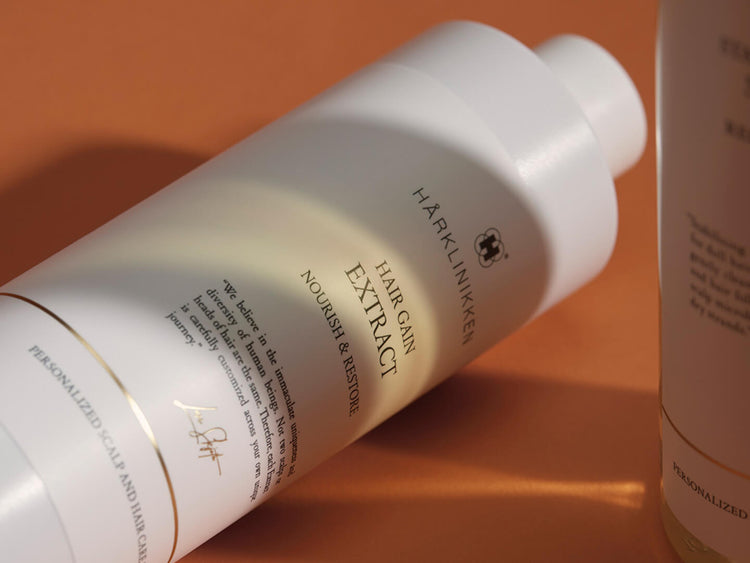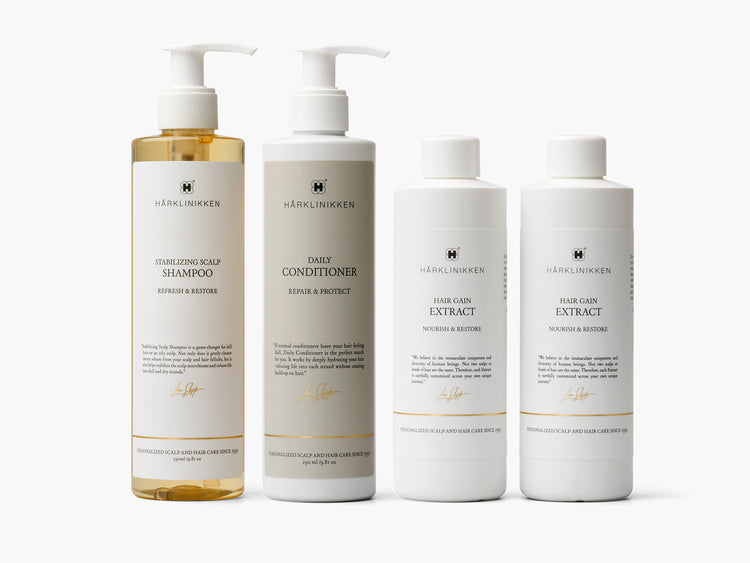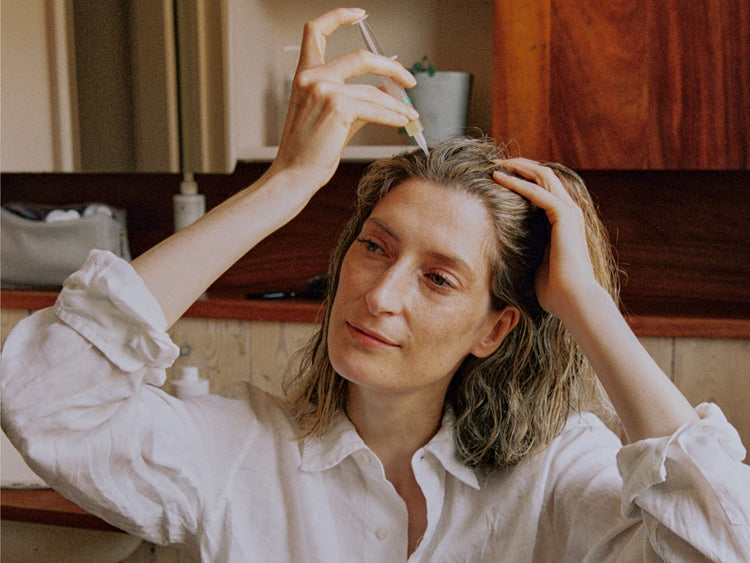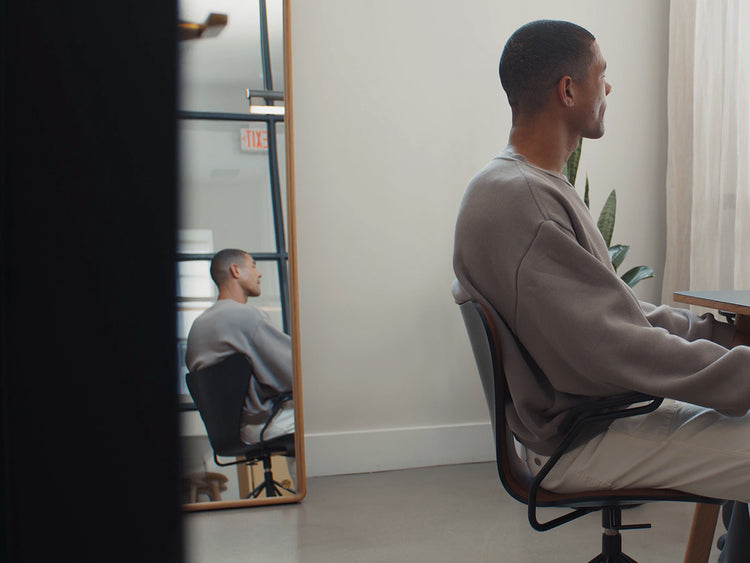While we’re big advocates for heat-free hair styling, we understand how hard it is to give up hot tools for that final touch. For that reason, it’s important to understand how to correctly use them to protect your strands and reduce the amount of potential damage. Read on to learn everything from how these tools work to optimal heat settings and tell tale signs that you’re overusing your blow dryer, straighteners or curling irons.
Four rules for using hot styling tools:
- Always use a heat protectant
- Only use hot tools on damp or dry hair, never wet
- Don’t exceed 400°F / 204°C (preferably stay between 250-300°F / 120-150°C)
- Give your hair plenty heat-free “rest days”
How do hot styling tools work?
Heat and hot styling tools alter the hydrogen bonds holding the hair's shape. When heat is applied to the hair, these bonds weaken and allow the hair to be reshaped into the desired style. This is why hot tools like flat irons and curling irons are popular for creating straight or wavy styles.
How does heat damage hair?
Hydrogen bonds are the weakest chemical bonds and they break when introduced to heat or water. This is not a problem – unless we’re treating our hair badly when it’s wet or has heat applied. We don't need a heat protectant for those hydrogen bonds, but for the hair cuticle (the layer that protects the cortex). Applying high heat to wet hair comes with additional issues as water can rapidly expand and evaporate within the hair strands and damage the hair cuticle. Damaging the cuticle increases the risk of hair becoming rough and coarse – which can manifest as dry, brittle, dull, wiry and frizzy hair.
Heat styling hair can contribute to or worsen scalp issues in several ways:
- Dryness: The high temperatures from styling tools like flat irons, curling irons, and blow dryers can strip the scalp and hair of natural oils. This can lead to drier strands that are more prone to breakage and dry scalp which is sensitive to irritation, flakiness, and itchiness.
- Heat Damage: Excessive use or improper handling of heat styling tools can result in burns on the scalp or damage to hair follicles. This can damage the skin, leading to pain, redness, inflammation, and even permanent damage or scarring in hair follicles, weakening the hair shaft and making it prone to breakage.
- Scalp Sensitivity: Heat styling can cause increased sensitivity and inflammation of the scalp, particularly if the tools are used at high temperatures or if the styling process is prolonged. The scalp can become more reactive to other environmental factors or products, triggering inflammation or other scalp conditions. Inflammation can lead to conditions such as folliculitis (inflammation of hair follicles) or exacerbate existing scalp issues like eczema, psoriasis or seborrheic dermatitis.
- Product Buildup: Heat styling often involves the use of styling products, such as sprays, gels, or serums. These products can accumulate on the scalp, leading to product buildup. Product buildup can contribute to scalp issues like dandruff and itching.
What is the best way to protect your hair from heat damage?
A heat protectant – and you should never use hot tools without one. Heat protectants form a protective barrier between the hot tool and your hair, which helps to reduce damage to hair's protein structure caused by heat, helping the hair maintain its integrity. Our leave-in Hair Hydrating Crème, Styling Gel and Styling Wax all work as styling products while also protecting your hair from heat.
What is the ideal temperature for using hot styling tools?
In general, we recommend never exceeding 400°F / 204°C. Ideally stay between 250-300°F / 120-150°C.
Is blow drying better for hair than air drying?
Blow drying and air drying both have their pros and cons. Blow drying can be faster and give you more control over your hair styling, but it can also damage your hair if you’re pulling at your hair with a brush, using a high heat and even more so if you´re doing it too frequently. Air drying is much gentler on your hair and promotes natural texture, but it can take longer and may not give you the exact style you want. We typically suggest allowing your hair to air dry until it’s only slightly damp before applying heat.
Are some tools safer for your hair than others – blow-dryers, curling wands, straighteners, air-wraps?
Any consistent use of hot styling tools will cause some damage to the hair and potentially to the scalp from the heat and pulling, but the more modern iterations are often better than older ones. It’s important to always be mindful of the temperature setting and frequency of use, as well as going for techniques and tools that cause less pulling – reducing the stress on your strands and follicles.
What are the differences in hot styling tool materials?
When choosing curling wands and straighteners, the material of the heating plates and barrels is a crucial factor that can impact your hair’s health.
Ceramic hot tools provide an even distribution of heat. This will lower the chances of "hot spots" on your device that could cause hair damage. However, pure ceramic hot tools take longer to heat up and can easily break when dropped.
Tourmaline is a crystalline mineral that generates negative ions, which can help seal the hair cuticle and reduce frizz.
Titanium is a lightweight, durable material that heats quickly, allowing you to style your hair quickly. This material may not be suited for those with fine or damaged hair due to titanium's ability to get extremely hot.
Ionic technology utilises negative ions to help smooth hair strands and reduce frizz. This technology can be incorporated into a flat/curling iron regardless of plate material and has the added benefit of working with reduced heat.
Ceramic-titanium blend styling tools combine the benefits of both ceramic and titanium. This combination aims to provide quick heat-up times, even heat distribution, and smooth styling results.
Ceramic-tourmaline blend combines ceramic and tourmaline and aims to offer the benefits of even heat distribution along with the frizz-reducing properties of tourmaline.
What are some telltale signs you're overusing hot tools?
Some common signs of damage due to excessive heat styling include split ends at the tip and lengths of hair; rough, brittle and dry hair; and excessive frizz. You may also notice that your hair is more prone to breakage and lacking in shine. If you're experiencing any of these issues, it may be time to cut back on your use of hot tools and increase the hydration products.
How can I repair heat damage done to hair?
Heat damage can’t be fully reversed, but hydration is the key to restoring health to dry, brittle strands and supporting a healthy and protected environment for new growth. That means never skipping the conditioning step on wash days. (We recommend people with all hair types use our lightweight but moisture-packed Daily Conditioner.) And if you’re using hot tools, make sure to deeply pre-hydrate strands with our rich Hair Hydrating Crème, and apply our nourishing Hair Mask once or twice a week. Read more about the best conditioning methods here.

Unsure where to start?
We only accept candidates who we believe we can help, which is why our online Hair Assessment is the best place to start. Based on your results, you will either qualify for immediate treatment or we will organize a consultation.




